© 2025 ALLCITY Network Inc.
All rights reserved.

When German Marquez takes the mound takes the mound on Wednesday night, he will be five strikeouts short of becoming the Colorado Rockies’ single-season crown.
If he punches out a handful of Philadelphia Phillies at Coors Field, he’ll pass Ubaldo Jimenez’s mark of 214 that he reached in his legendary 2010 campaign, as teammate Kyle Freeland tries to best Ubaldo’s 2.88 ERA from that season. While Marquez won’t earn any accolades for run prevention this year due to early struggles, he’s sat down hitters at a rate unseen from a Rockies starter in the team’s 26 seasons: his K/9 of 10.25 will, if it stands, be the first time a player in the purple will reach double digits in that stat.
If the Rockies make the postseason, it will be in no small part thanks to Marquez’s pitching and his ability to strike hitters out while still going deep into games, resting the bullpen, especially lately. In three of his four starts in September, he’s struck out 11 hitters. In all those games he went at least 6.2 innings, allowing two runs twice and one run once. Even in the outlier start, Sept. 15 at San Francisco in which he only K’d four Giants, he still allowed only three runs and worked 6.0 innings. He hasn’t walked more than two batters since late June.
But the season didn’t start this way for Marquez. Entering June, his 4.21 ERA was in large part due to his inability to reach a strikeout per inning, and walking almost four hitters per game. A weak March/April performance saw some bounceback in May, but the control of his stuff still wasn’t there, breeding manifestation of his worst month of the season in June. But, beginning in July, something clicked, and Marquez worked his way to a 2.77 ERA in the second half, bumping his K/9 above 11 and dropping his BB/9 under two.
Marquez’s arsenal has never been questioned, with a blazing fastball and a sharp slider. But, like a wild horse, stuff that electric needs taming. His pitches bucked the 23 year old off the path to success many times in his young career, leaving both him and the Rockies in the dirt. The fastball would ride, the slider wouldn’t slide or would catch entirely too much of the plate, or the location simply wouldn’t be there. But Marquez persistently dusted himself off, and now it seems he has not just one of the quickest, most durable steeds in the race, but it’s also appeared to be one of the most loyal as of late.
Here’s how Marquez has conquered the nature of his arm.
Working the bottom of the zone
It’s been a common methodology for Rockies pitchers, almost for the entirety of their existence, to work the bottom of the strike zone to limit fly balls because of Coors Field’s spacious outfield. In recent years, the embracing of launch angles and the emphasis of putting the ball in the air from a hitter’s standpoint has validated that.
For Marquez especially, balls up in the zone have given him trouble.

When Marquez leaves the ball up, it gets crushed. This isn’t exactly rocket science, but it’s worth noting.
Those two home runs are offspeed pitches that are left up, and Marquez pays dearly. Up in the zone, sliders flatten out, curveballs tend to run straight into bat barrels and changeups can be fought off easier even if they deceive the hitter.
But Marquez made an adjustment. When he struggled in the first half, his non-fastball pitches found the upper end of the zone too much:
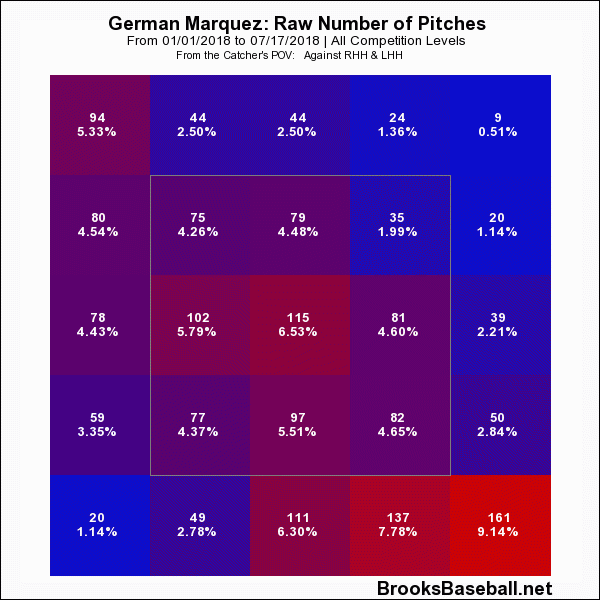
In the second half, he was able to focus his pitches lower in the zone, with significant percentage increases in the lower 10 zone areas at the expense of the top areas, with exception of the corners.
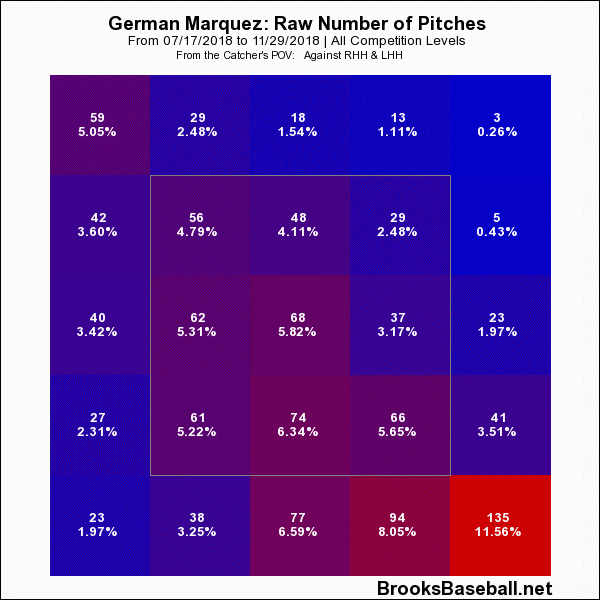
Specifically, Marquez has locked in on the low gloveside corner. This is the spot his slider is the most effective, with the most vertical and horizontal break and the most deception and flailing from opposing hitters.
And, when he has the slider working, it makes his already potent high-90s fastball, his developing curveball (which we’ll get to) and changeup play up even more. Our friend Rob Friedman shows this better than anybody else.
German Márquez, 95mph Fastball (called strike) and 86mph Slider (Swinging strike), Overlay.
Good look at why Pence might have swung at that Slider well out of the zone. {"Make balls look like strikes"] pic.twitter.com/BhoszT0dYK
— Rob Friedman (@PitchingNinja) September 16, 2018
The slider even changes how he can use his fastball. Typically, especially for a pitcher with the velocity Marquez has, the fastball is an up-in-the-zone pitch. But, as we see in that clip, his slider can disguise his fastball and make it effective low and away as well.
And, as the theme continues to be, when a pitch is a weapon somewhere, it makes its usage elsewhere all the more effective by simply being another option the batter has to protect against. When the options become so many that the hitter has to guess, a sort of cognitive overload can happen, wherein hitters just aren’t prepared for the pitch that’s about to come. Marquez’s arsenal is not only hard to hit, but it’s hard to predict which can make it hard to even swing at.
Graded on a curve
But even as solid as the slider has been to back up the fastball, every starting pitcher needs a third pitch. Over the course of five to nine innings, a hitter will guess correctly enough times to do some damage with only two real threats. That’s why the development of Marquez’s curveball has been so influential in his success.
Marquez’s best months by ERA coincide with the months that hitters don’t square up his curve:
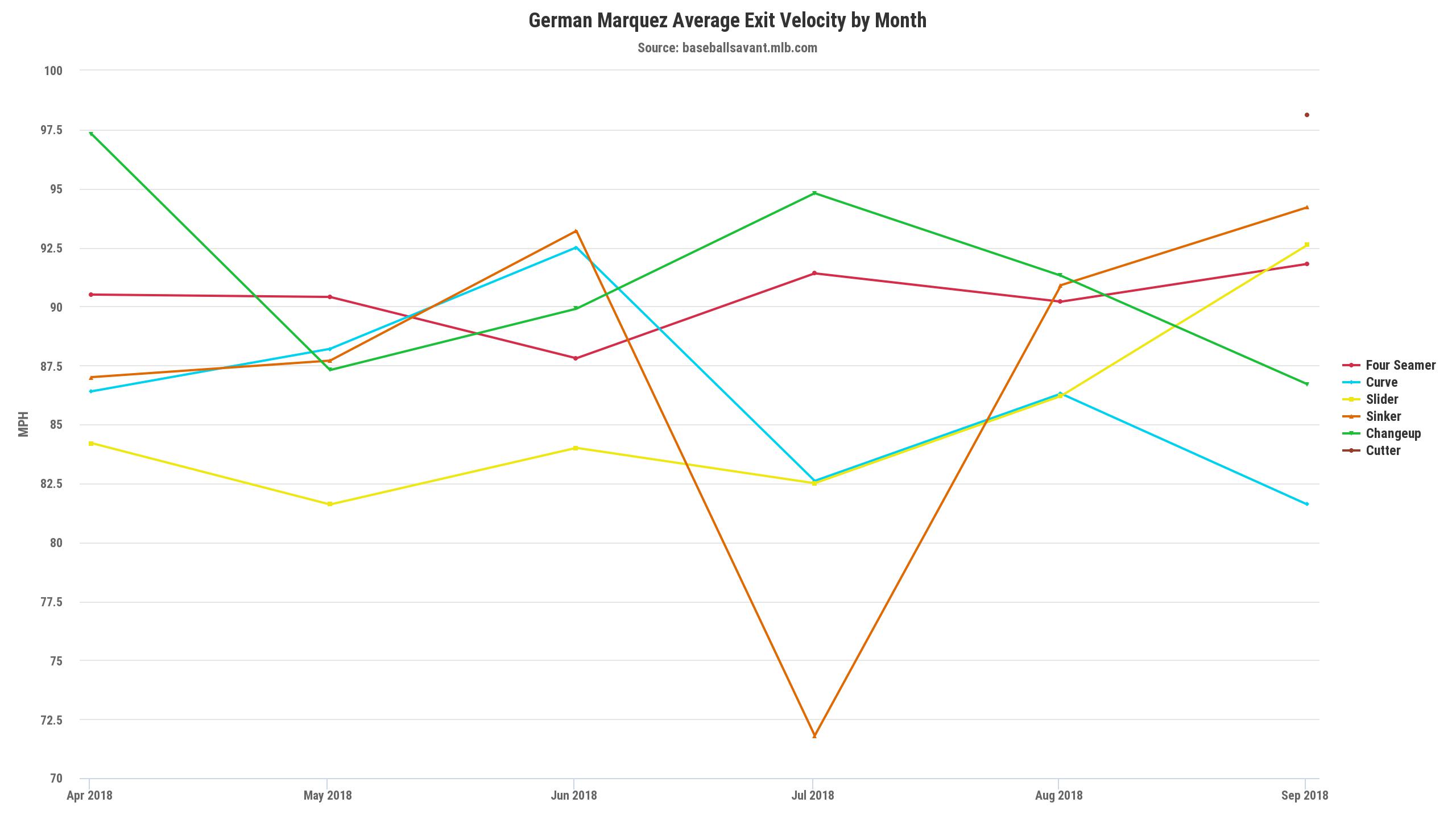
Marquez, after really committing to the learning pitch in the middle of the 2017 season, seems to have found consistency with the pitch, giving him a third weapon. Over the past few months, when he’s found the most success of his career, he’s been consistent with the movement on the pitch. He knows where it’s going, which means he can place it where the other team can’t hit it.
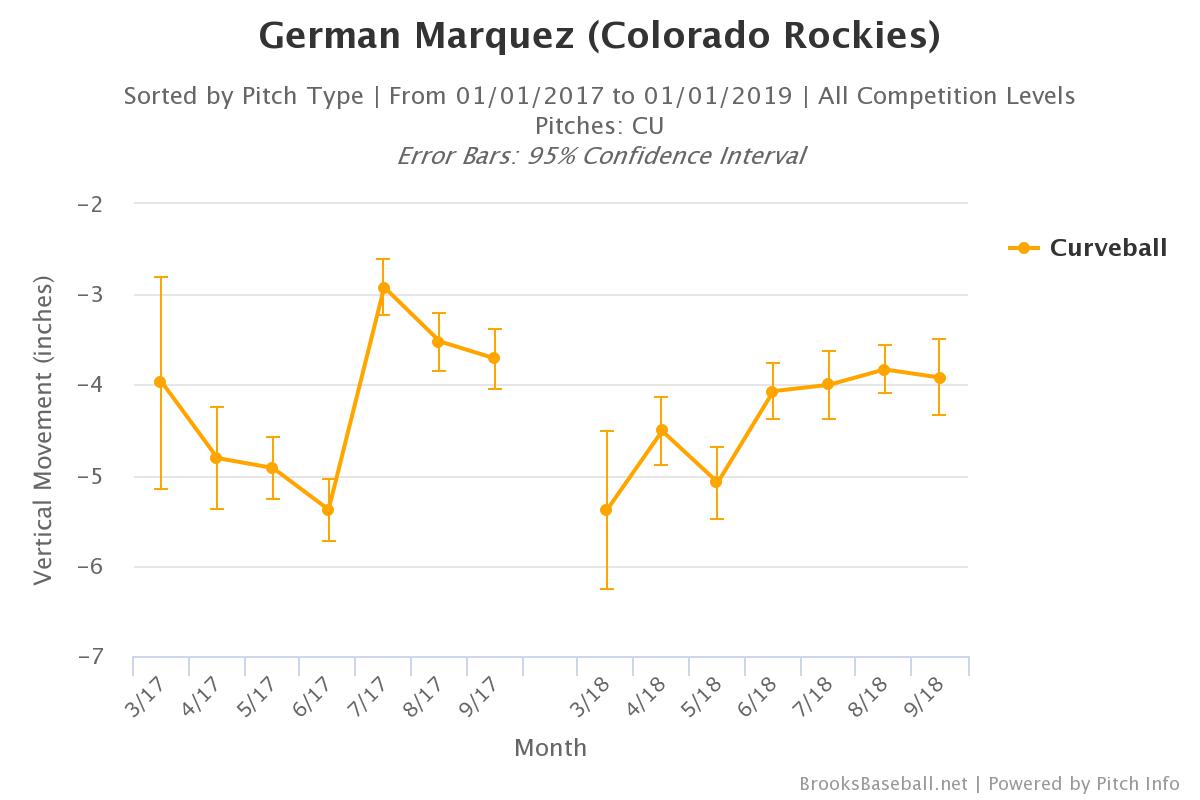
Germán Márquez, Filthy 83mph Curveball (Grip/Release/Spin Axis/Slow). 😷 pic.twitter.com/6PObkoem4Y
— Rob Friedman (@PitchingNinja) September 5, 2018
Putting it together flawlessly
It’s one thing to have the pieces, though, and another altogether to assemble the puzzle. Marquez has figured that out too, best exemplified by his immaculate inning on Aug. 8.
Marquez throws more pitches outside the strike zone than he does above 90 mph in his perfect frame, which speaks to the confidence he’s deservedly developed in his breaking stuff. On strike three to Corey Dickerson, he gets a hitter in protection mode out on his front foot cutting at a pitch that was at least a foot below the strike zone by the time it got to him.
Starling Marte’s at-bat didn’t even feature a fastball, and only one in the zone. He also spotted the slider on the inside edge perfectly.
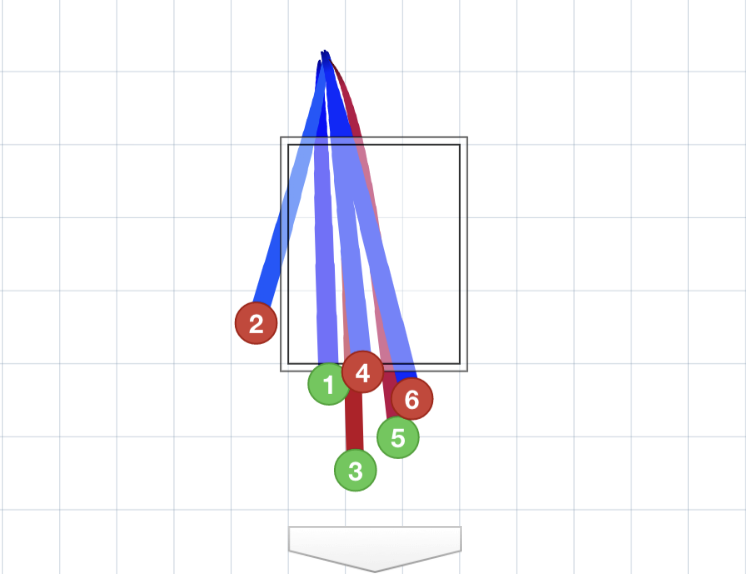
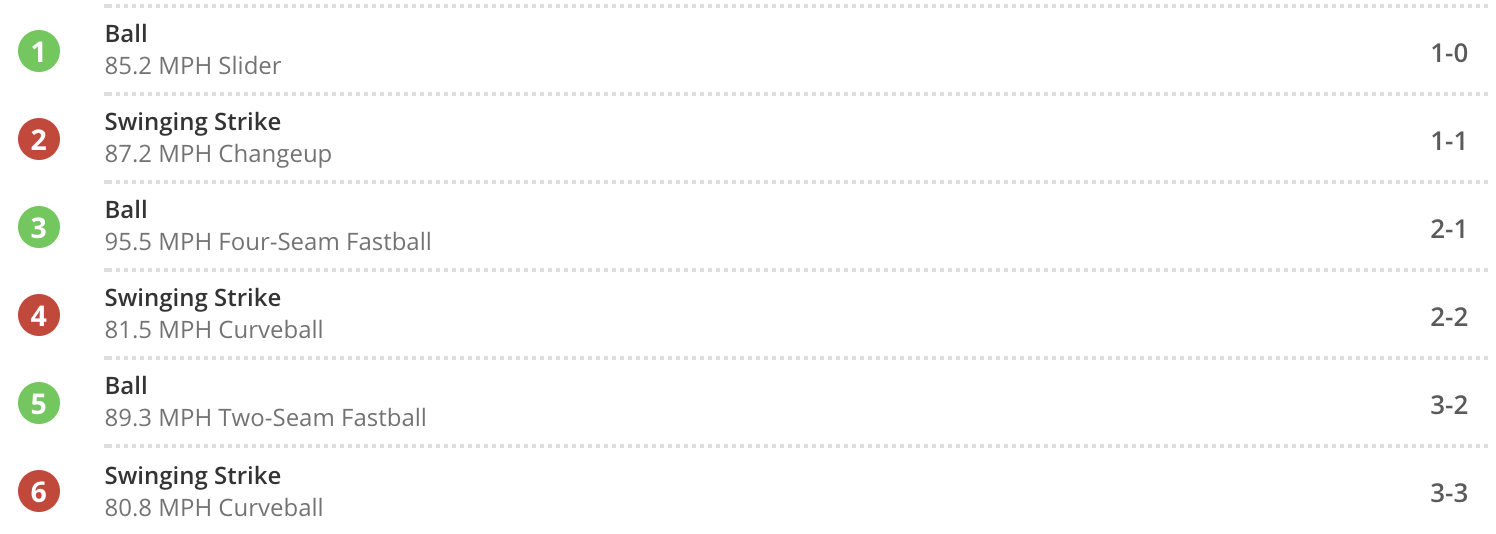
In this at-bat against Jon Jay on Sept. 21, Marquez shows he trusts his offspeed enough to throw it out of the zone in a full count. That takes guts, even against Jay in a low-leverage situation.
In Conclusion
German Marquez may only be 23, but he’s grown over the past two seasons in front of our very eyes. It appears that the fireballer has harnessed his secondary, and has grown confident in his ability. Behind Freeland, Marquez has established himself as a top-of-the-line No. 2 starter.
German Márquez, Nasty 87mph Slider. 😷 pic.twitter.com/cpRjXdM9VA
— Rob Friedman (@PitchingNinja) September 22, 2018
Comments
Share your thoughts
Join the conversation



